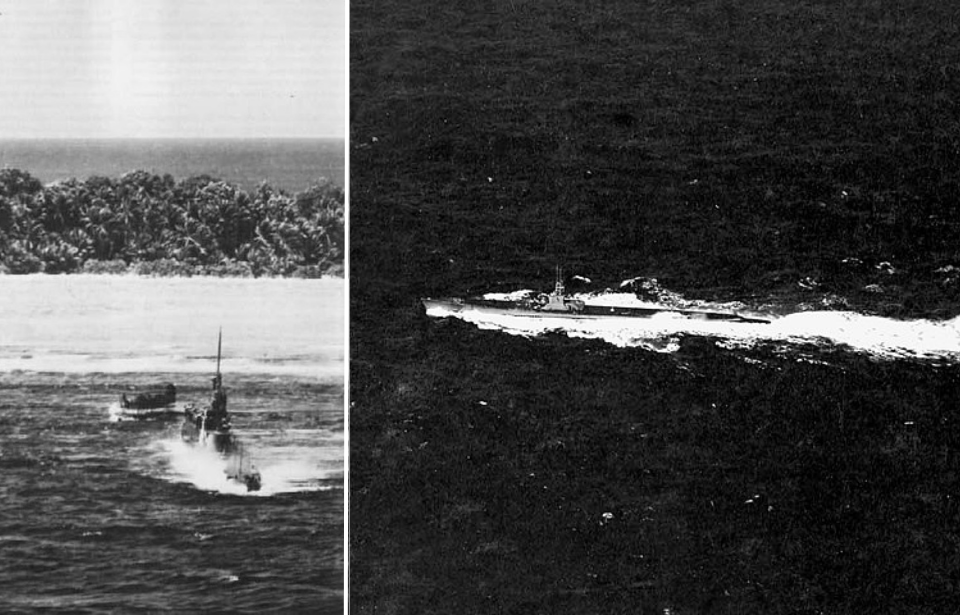The USS Harder (SS-257), a Gato-class submarine, served in the Pacific Theater during the Second World War. She was awarded the Presidential Unit Citation and six Battle Stars for her actions during the conflict. While she was sunk in August 1944, her success in combat made her one of the most famous submarines of her time.
USS Harder‘s (SS-257) early career with the US Navy
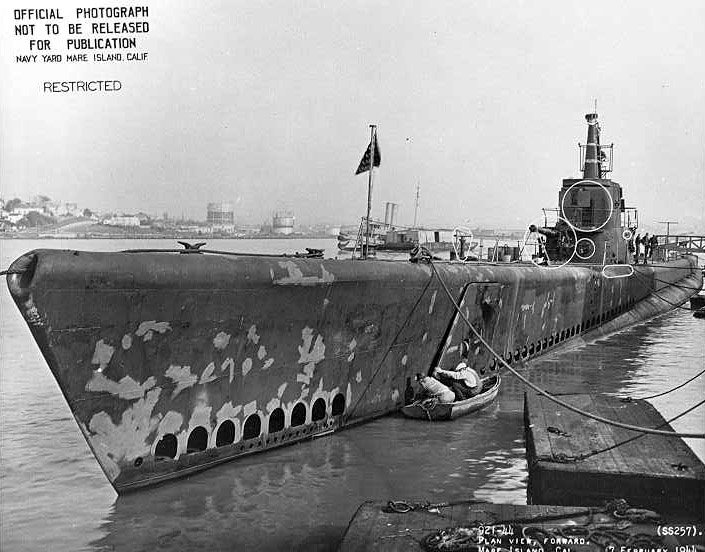
The USS Harder was laid down in Groton, Connecticut, on December 1, 1941. She was launched the following year and commissioned on December 2, 1942. Following her commissioning, the submarine performed a shakedown off the East Coast. Once completed, she sailed to Pearl Harbor, Hawaii.
During this transit, Harder almost became the victim of friendly fire. On May 2, 1943, a US Navy Consolidated PBY approached the vessel while she was sailing through the Caribbean. While Harder signaled, the flying boat attacked with machine guns and two bombs. The submarine quickly submerged, avoiding damage, and continued her trip to Pearl Harbor.
First and second wartime patrols
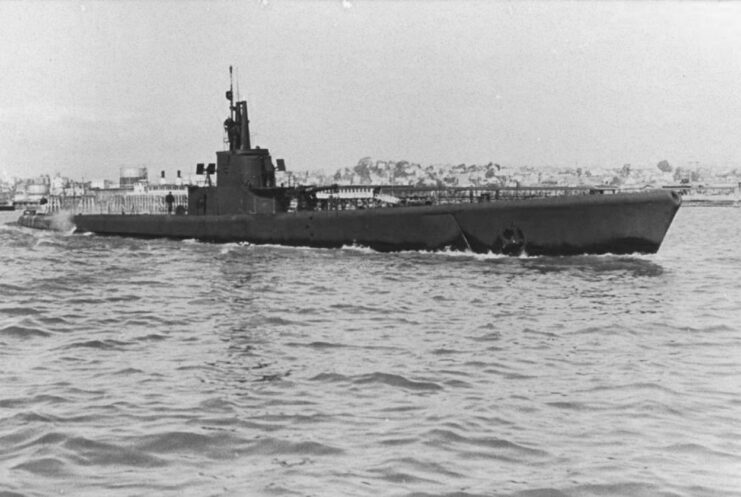
The USS Harder’s operational history is nothing short of impressive. During her service, she gained a reputation for being an aggressive warrior, achieving above-average successes on her patrols. According to William P. Guner in his book, US Pacific Submarines in World War II, the average American vessel attacked three Japanese ships per patrol, sinking less than one – Harder sank at least four on her first four patrols.
After arriving at Pearl Harbor, the submarine began her first patrol on June 7, 1943. Off the coast of Japan, she spotted her first target on June 22, firing four torpedoes at two enemy ships. She successfully scored a hit on one of the cargo liners. Following this, Harder sank three more freighters and damaged four ships.
After a short period at Pearl Harbor, Harder began her second patrol on August 24, 1943, once again headed for the Japanese coast. On September 9, she sank the Koyo Maru. Two days later, she took out the Yoko Maru. Harder continued her patrol and was forced to abandon attacks due to enemy aircraft fire. She was also kept underwater for over two days due to an extensive depth charge attack by a Japanese convoy.
On September 19, Harder was back in the fight, sinking the Kachisan Maru. This successful streak continued with the sinking of the freighter Kowa Maru and the tanker Daishin Maru just a few days later.
Third and fourth wartime patrols
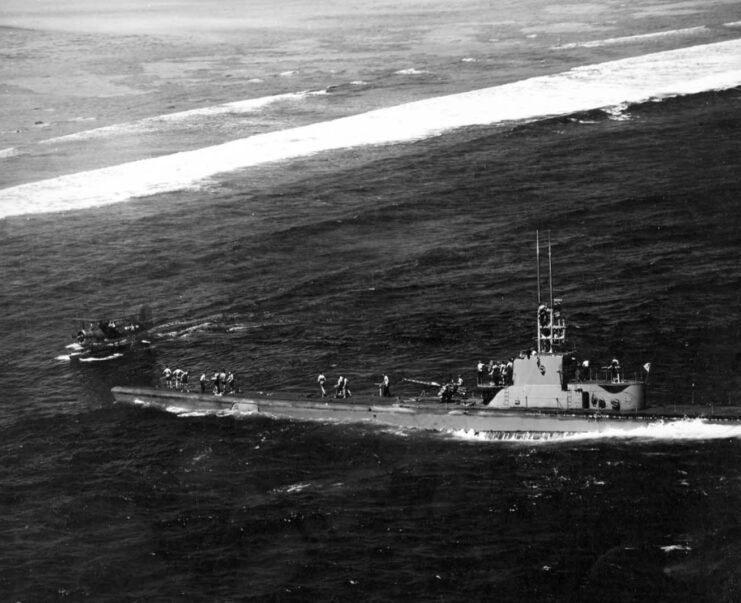
The USS Harder was part of a wolfpack for her third patrol. Departing Pearl Harbor on October 30, 1943, she was joined by the USS Snook (SS-279) and Pargo (SS-264), en route to the Mariana Islands. On November 12, Harder spotted a Japanese ship on fire, due to self-inflicted damage. She waited until dark and proceeded to sink the enemy vessel with gunfire. Seven days later, she sank the Udo Maru with six torpedoes, and two more took care of the Hokko Maru.
After nightfall, Harder sank a third Japanese ship. This was followed by a fourth, which proved more difficult than anticipated. After several shots, the Nikkō Maru remained afloat. Even after using up all her torpedoes, the vessel had yet to sink. Only after rough weather was she finally destroyed. With that, Harder returned to Pearl Harbor.
Accompanied by the USS Seahorse (SS-304), Harder began her fourth patrol on February 27, 1944. The submarine was placed on lifeguard ship duty to rescue downed aviators. On April 1, Harder was ordered to rescue an injured pilot stranded on a beach on a Japanese-held island. With air cover, she got as close as she could and sent a boat in to retrieve the airman. Despite enemy fire, she successfully rescued the pilot and returned to her patrol.
Harder subsequently sank three more vessels, including one destroyer, and took part in shore bombardments with her forward-mounted gun.
The USS Harder‘s (SS-257) famed fifth patrol
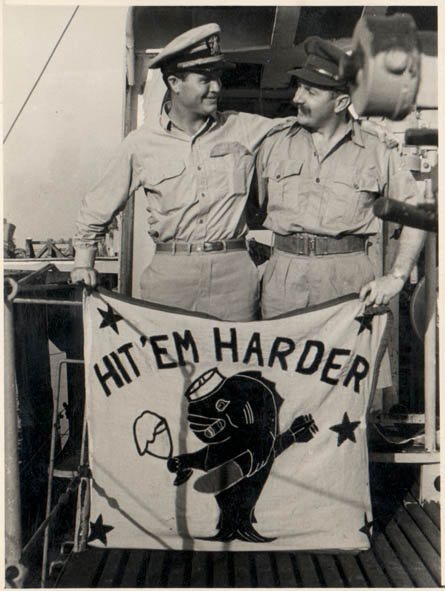
The USS Harder’s fifth patrol became her most famous. She joined other submarines in the hunt for Japanese ships around Tawi-Tawi, departing from Fremantle, Australia on May 26, 1944.
On June 6, Harder spotted a convoy of tankers and destroyers. While she followed the vessels, the Japanese noticed her in the moonlight. Submerging and turning away, Harder fired three torpedoes – two hit Minazuki, sinking the ship in minutes. The rest of the convoy escaped with depth charges holding the submarine at bay.
The next day, Harder spotted another destroyer. Hayanami was hit with two torpedoes, one of which struck the ship’s magazine, resulting in a massive explosion. The submarine didn’t see any other destroyers until the following night. Seeing the two vessels, she fired four torpedoes, two hitting Tanikaze and another striking the second ship. Once again, she was forced to submerge due to enemy fire, but both destroyers had sunk almost instantaneously.
On June 10, Harder came up against a large Japanese task force, which included three battleships, four cruisers and a number of destroyers. Spotting the submarine, a destroyer turned toward her. Harder fired three torpedoes, causing the ship to explode and sink. Due to enemy counterattacks, Harder had to submerge, but once she resurfaced, it was confirmed the destroyer had sunk. After notifying command, she sailed to Darwin, Australia, ending her fifth patrol.
Harder‘s success during this patrol became legendary. Not only did the submarine boast the loss of five destroyers in four days, she also struck fear into the Japanese. Adm. Soemu Toyoda was reported to believe Tawi-Tawi was surrounded by submarines, when, in reality, it wasn’t.
A legendary submarine meets her end
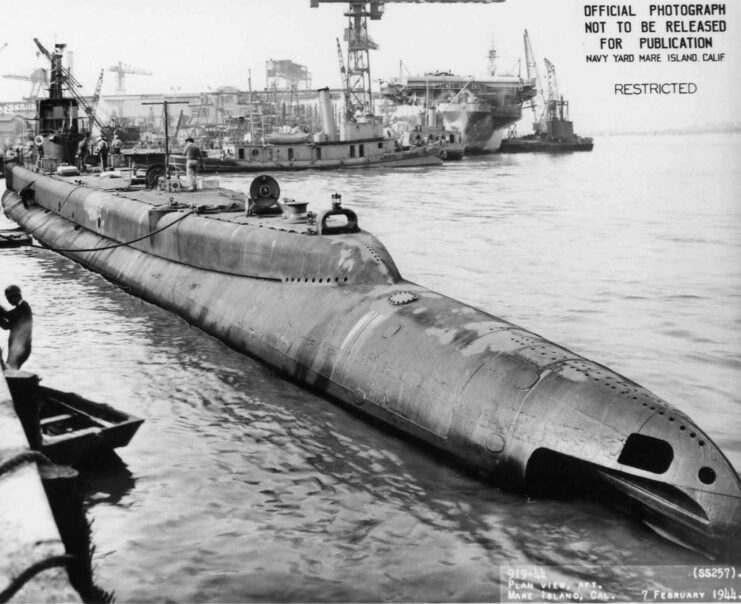
On August 5, 1944, the USS Harder departed from Fremantle for her sixth patrol. After conducting exercises with the USS Hake (SS-256), the submarine sailed north with the USS Haddo (SS-255) to an assigned area west of Luzon, Philippines. They were to act as a wolfpack with Cmdr. Samuel D. Dealey in command.
The patrol got off to a successful start with four Japanese ships sunk off the coast of Palawan Bay, Mindoro. The next day saw even more success, with Harder sinking two frigates. At this point, Haddo ran out of torpedoes and left to replenish, leaving Harder and Hake off Dasol Bay, in the Philippines.
On August 24, the submarines came up against two Japanese destroyers. During this engagement, Harder was on the receiving end of heavy depth charge attacks, which resulted in the submarine’s sinking. After the incident, the Japanese reported, “Much oil, wood chips, and cork floated in the neighborhood.”
The US Navy declared Harder lost on January 2, 1945.
USS Harder’s legacy
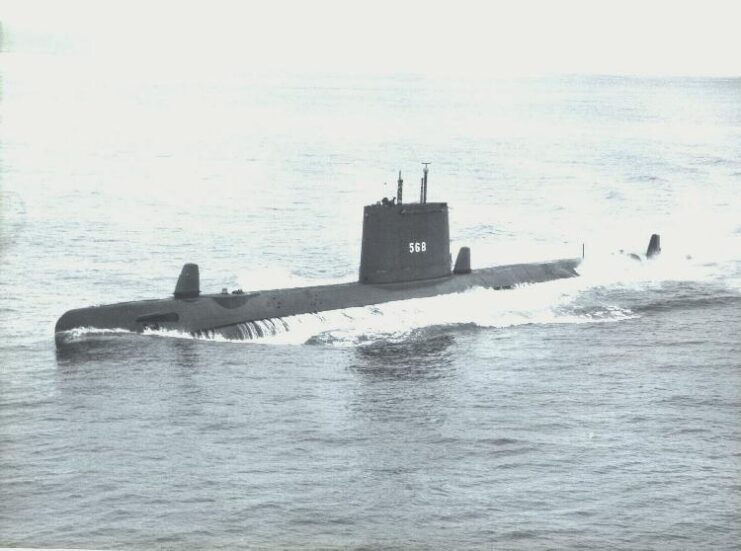
The USS Harder was officially credited with sinking 20.5 enemy ships. This meant she’d sank 82,500 tons, with an additional 29,000 tons damaged. The submarine was awarded six Battle Stars and the Presidential Unit Citation for her actions.
More from us: The History of the US Navy’s Canceled World War II-Era Battleships
In 1952, a second submarine under the Harder name was launched, with the designation SS-568. She served with the US Navy until 1974, when she was sold to Italy.
